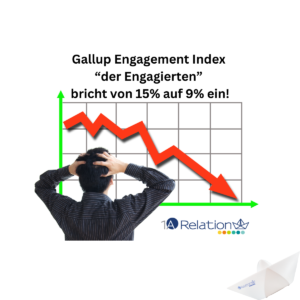Is the coronavirus forcing sales to completely digitize?
Social is the new magic word. At the latest since the beginning of the corona pandemic, social selling has been on everyone’s lips. The pandemic presents companies, especially marketing, sales and service, with a major challenge. Existing and potential customers can usually only be addressed digitally. This is precisely why customer satisfaction and retention are becoming increasingly important. Digital sales are therefore on the rise – and with it social selling.
Or let’s call it social pre selling
The Internet and modern sales tools help companies to adapt sales to the new situation. Especially social networks such as LinkedIn with its Sales Navigator, Xing or Facebook play a major role in social selling.
But then why social pre selling?
Because the conclusion in B2B very often does not take place directly on this platform. If it does, it is an absolute exception. But what the strengths of platforms such as LinkedIn, Facebook or Xing lie is clear: It’s about making contact, expanding and retaining. Hence the “Pre” slot. However, this does not change the need to start and accompany the selling on social media.
Social Selling = digital sales or digital marketing?
No, “digital marketing and sales” is about much more than just online shopping. Digital marketing is also only one aspect. It is a cross-departmental process. Above all, the often narrow boundaries between marketing and sales are broken in digital sales.
The process begins with a targeted approach to potential customers via the Internet or the platforms. The whole thing is supported by the distribution of the content on the basis of selected online marketing measures. Subsequently, an offer is submitted via the CRM system and – if successful – the business is processed. The digital part of the sale of physical products ends here, the logistical process is set in motion.
What opportunities and risks go hand in hand with this?
First of all, the digital world offers a lot of scope for the use of data. Tools such as Google Analytics and other analysis tools offer extensive possibilities for analysis and generation of information. Based on this information, potential customers can be targeted with suitable content. In the long term, therefore, there will be a change from push to pull measures. You now know the needs of the customers and can design the customer journey accordingly.
In addition to the possibility to generate and analyze data, digital sales offers further advantages. Travel distances are reduced because the personal visit to the customer is no longer necessary. Contact is suddenly possible through the Internet from anywhere in the world. E-commerce platforms also offer the possibility to access a product online not only from anywhere, but also at any time.
However, there are also certain challenges
The lack of personal contact associated with digitization is probably the biggest challenge. Customer relationships must be built and maintained purely digitally, even though good customer relationships are becoming increasingly important today. The mega-examples Amazon or Alibaba give an impression of how it can be done.
For most managers and employees, this puristic, digital approach is often new territory. New sales processes must be implemented and learned. But even the management of several sales channels can turn out to be quite complex. In the panel discussion on 25.03.2021 at the Shift CX, we also expressed this. ( The panel discussion starts at 4h 38 min.)
More information about digital sales can be found here.
How does social selling work?
Social selling can be seen as a subfield of digital sales. They try to make a name for themselves via their own social media profile. A wide variety of social media platforms can be used. LinkedIn in particular plays a major role here.
The company searches for relevant customers on social media through sales and tries to find information about them. In this way, contacts with new customers can be established and maintained online in a targeted manner. The customer can be analyzed on the basis of the data collected by the company and digitally provided with relevant information via social media.
However, the social selling process should not be confused with social media marketing or social media advertising. Especially in B2B marketing, much more is important. Thus, social selling is considered relevant, especially in the B2B sector, because in B2B sales, a targeted approach to potential customers is particularly important.
Read here what a service technician will play in the future for a pure role in sales
The customer does not want to be bombarded with information here. Rather, it is about actively engaging in social listening and entering the discussion at the right moment. It is important to successfully recognize the needs of customers via social media and to react accordingly. Under no circumstances should you try to start a sales show.
What are the things to consider when implementing a social selling strategy?
One should first create a basis through a meaningful profile. In the best case, your own profile then also appears when searching for certain keywords. This helps tremendously to expand your own network and generate leads.
Regular posts can optimally address your own target group. At the same time, your own posts as well as the posts of the target group provide a basis for interactions. Like, share, comment. Automated processes should be avoided. In the worst case, these lead to a negative reputation.
The interactions provide the basis for social listening. The collected information can be used in the long term for targeted approach, for example by inviting a potential customer to a suitable event.
Ultimately, however, it is always about offering the potential customer added value.
What is the advantage of social pre selling?
Above all, social pre-selling offers a central advantage: the typical cold calling is no longer necessary. The company can get in touch with the potential or existing customer via the social networks even before the actual acquisition. As soon as the right time (click on a PDF, feedback or certain keywords mentioned in the conversation, clear hint given) has come, the customer is contacted by the sales department. Tools like Nimble or Microsoft show how to do it. Unfortunately, not everything is possible in Europe. In addition, salespeople can work more efficiently, prioritize marketing activities and build virtual customer relationships.
Is social selling a new development?
Anyone who now assumes that social selling is a new phenomenon is wrong. Already in the course of digitization and with the advent of social media, social selling appeared for the first time. A study by Market Cube shows: Already in 2016, almost 40% of salespeople used this method of digital sales, and very successfully! Immediately before the pandemic, the rate of digital sales tools in Western Europe was already 87%, according to a study by LinkedIn.
What trends and developments are currently taking place in this area?
Basically, three current trends can be defined: a) the progressive digitization of sales and the desire for more coaching, b) a shift in preferences towards customer satisfaction and retention, and c) an active use of social selling tools in the hope of long-term success.
Salespeople want more coaching when switching to social selling
First of all, sales is in a general digitization process. Digital sales are increasingly becoming the standard, activities are shifting to virtual space. Salespeople must therefore be technically savvy. New methods are applied. Successful salespeople do this.
The influence of the pandemic and the associated acceleration of digitization is particularly great here. Even customers now increasingly prefer digital communication. If you want to keep up, you have to follow the trend. Sales insight tools and CRM systems must be actively used.
Many sales employees therefore want support from the companies. According to a study by LinkedIn, four out of five sales reps want more coaching and training on digital sales strategies. Although social selling and other CRM tools offer extensive possibilities, these processes are sometimes very complex. Active support is needed, because tools only work if they are used correctly.
Customer satisfaction and customer loyalty are becoming increasingly important
Especially in the B2B sector, customers appreciate the contact with the sales staff. According to LinkedIn’s study above, 87% of customers see sales reps as a reliable point of contact for important questions. Through regular contact and strategic advice, customer loyalty and thus also trust are sustainably strengthened. According to the sales staff, the latter is an important factor for business transactions.
But the pandemic is also leading to complications here. Short-time working and job cuts lead to losses. Customer loyalty and thus trust cannot be maintained. In turn, for example, communication via LinkedIn increased by over 50% as a result of the pandemic. Social selling, social listening and an active network are also an important factor in terms of customer satisfaction and retention. Every third customer alone is more likely to opt for a provider if this has been recommended to him by one of his contacts.
Nevertheless, price and ROI remain the decisive factors for a successful business transaction. But here, too, the following applies: if I offer the customer an attractive offer, this in return generates trust with the customer.
Social selling as a long-term investment
Due to the advancing digitalization and the pandemic, however, sales cycles are also becoming longer and deals less likely. Salespeople face difficulties in achieving the sales goals set by the company. This requires a rethink towards a long-term measurement of success.
High-quality CRM data makes this long-term evaluation possible, social media and its tools also provide sales insights. Above all, tools such as LinkedIn’s Sales Navigator are becoming more and more important.
Although the “warm” acquisition via social listening followed by social selling needs more time, in the long term it offers greater success. According to an article in the Harvard Business Review, 70% of salespeople now inform themselves extensively about a potential customer before the first contact. This approach is extremely important, as 90% of the most important decision-makers do not even react to cold calling.
In addition, social selling tools can be used to generate high-quality leads that can be won as customers in the future. Customers have long been engaged in social listening themselves and are therefore open to interaction.
LinkedIn’s Social Selling Index as a specific metric
For all salespeople with a LinkedIn profile, the platform with the Social Selling Index offers an attractive key figure. The Social Selling Index is a key figure that evaluates one’s own social behavior on a scale from 0 to 100. The index is always based on the respective industry.
The index consists of four sub-areas: brand building, network, content and relationships. This makes the index a reference to the AIDA formula. A maximum of 25 points can be achieved in each sub-area. These are then added together and thus form the total value.
Your own index can be compared with your own industry and your own network. Thus, it offers the opportunity to check your own social marketing.
If you want to improve the value, there are four steps to work through:
1. Complete your Own LinkedIn Profile
2. Add the right people to your network
3. Produce and share relevant content
4. Build good relationships
Our conclusion:
Social selling or better social pre selling is no longer a trend, but has become increasingly important. Those who do not jump on this bandwagon will lose the connection in the long term and thus valuable customers. Because one thing is certain: Customer satisfaction and customer loyalty are more important than ever thanks to digitization. Cold calling means that customers can no longer be reached today. Social listening is the new way. The new motto is to listen first, then to act.
As a company, however, you should not throw your employees in at the deep end, but actively support them through coaching and training. Only if the tools in marketing and sales are used correctly will success be achieved in the long term. Social selling measures must be consciously planned and implemented.
The newly acquired CRM data will gradually replace old key figures. With the Social Selling Index, LinkedIn already offers a good metric and other social networks will most likely follow suit.
If you want to continue selling successfully in the future, you can’t avoid the digital path via social media.
Note: This is a machine translation. It is neither 100% complete nor 100% correct. We can therefore not guarantee the result.












